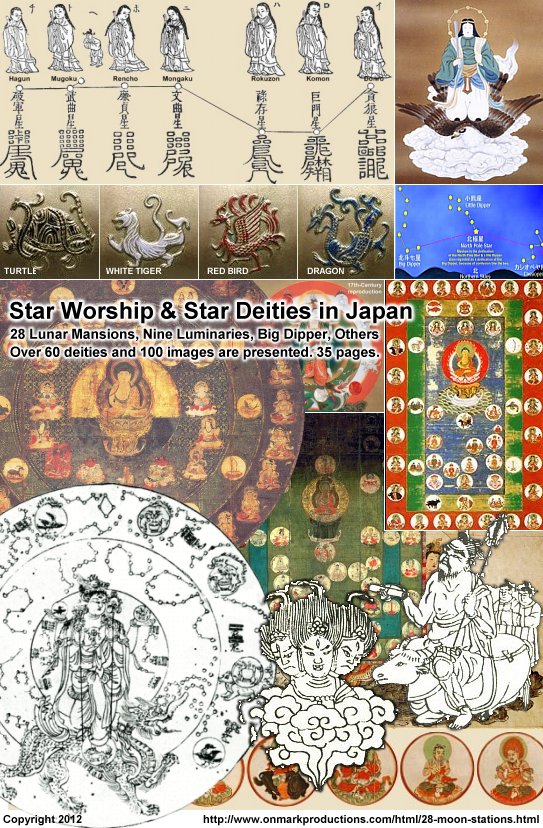Japanese Buddhism & the Deification of the Stars
Japan imported China’s Yin-Yang divination and Feng Shui practices in the mid-6th century CE, including astrological lore surrounding star groupings such as the Seven Big Dipper Stars, the Nine Luminaries, the 12 Zodiac Signs, the 28 moon lodges, and the 36 animals. The most receptive camps were Japan’s esoteric Shingon and Tendai schools, which took the lead in introducing star worship to Japan. The integration of celestial bodies into Japanese Buddhism peaked during the mid-and-late Heian period, but star faith never developed into a major branch of Japanese esoteric art — indeed, the number of extant star mandala and star-related masterpieces in Japan is very limited. Star worship is still alive today in Japan, but it is not a major force in modern religious practice. This 35-page report presents a brief history of the 28 moon lodges in China and the group’s later usage in Japanese star worship. This is followed by a lengthy review of the 28, plus a guide to the deification of other important stars and planets, including the Seven Big Dipper Stars, the Nine Luminaries, and the Pole Star (aka Myōken Bosatsu). All together, some 60 deities and over 100 images are presented. Click the image below to get started. Enjoy the tour. Popcorn not included.

Star Worship and Star Deities in Japan
Explores over 60 deities. Features over 100 photos.
In Japan today, many temples and shrines have “commercialized” religious cosmology based on Chinese astrological concepts. In Japan the system is called Yakudoshi 厄年, which translates directly as “bad luck years.” It is based on the concept of Chinichi 直日 — a specific day on which a heavenly body (or bodies) exert an undue influence on earthly affairs. To determine if one’s fortune will be good or bad requires a knowledge of the movement of the celestial bodies, including those of the Big Dipper, the Nine Luminaries (five planets, sun, moon, comets, eclipses), the Twelve Signs of the Zodiac, and the Twenty-Eight Moon Lodges (this page). For Japanese men, the most inauspicious ages are 25, 42, and 61. For women, the ages are 19, 33, and 61. This is an oversimplification, mind you. During these unlucky years (and others), people are urged to visit temples and shrines and pay money for rites that will provide divine protection from baleful celestial influences. For reasons unknown to me, the worst years are 42 for men and 32 for women. Many of Japan’s temples & shrines aggressively market such beliefs to increase revenues.
This entry was posted
on Monday, December 3rd, 2012 at 1:10 am and is filed under Myoken (Pole Star), Star Worship, Uncategorized.
You can follow any responses to this entry through the RSS 2.0 feed.
You can leave a response, or trackback from your own site.






